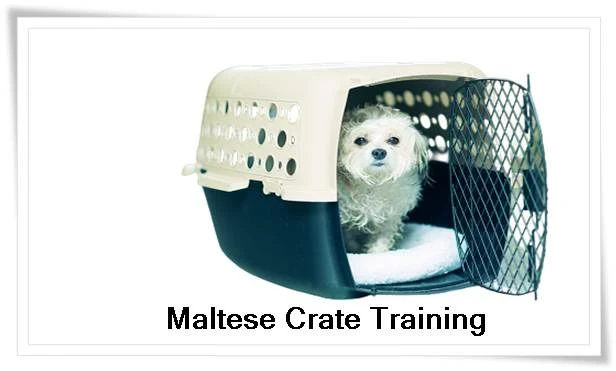Maltese Crate Training Should Start When Puppy Is Young
 |
| Dog Training |
Have you ever wanted to know exactly how to go about maltese crate training?
You aren’t the only one! Every single year, hundreds of thousands of dog owners all across the globe learn (or at least, attempt to learn) how exactly to keep their dogs in a crate or cordoned off area. This is especially useful to prevent and reduce barking, destructive behavior, and anxiety. Especially with Maltese, crate training is also useful in house breaking your dog- your life will be much easier afterwards should the puppy decide to sleep with you in your bed or on the couch.
For all intents and purposes, most dogs learn to love their crate. This comes from a wilderness instinct, in which the dog will often look for a small, cozy space to burrow into. This space is designed to keep them safe and warm- a crate in a domesticated setting does roughly the same thing. The crate is the place that they have to themselves. Wide open spaces can often confuse the dog because they believe this whole entire space to be theirs, which they will be then try to “patrol” and keep safe.
With Maltese crate training is best attempted from a very young age, when they are just puppies. A full grown dog may have difficulty adjusting to a small space and would grow only more anxious during the adapting period. Young puppies tend to adapt quicker, and are usually not upset if they are not given the option to sleep with you in your bed right away (since the crate serves this purpose).
Placing the crate in a very active part of the room is perhaps the best option, like the family living room. Ensure that the crate has a clean, comfortable space to sleep, some water, and maybe a single toy to entertain them. If the dog has enough room to get up and walk around, they probably have too much room (which can encourage making a mess or the place). It is natural instinct for a dog to not make a mess of their small spot since that is where they will sleep. As long as there is enough space for them to get up and turn around, it is comfortable for them..
During the first few stages, it is important that you do not encourage noisy behavior. If they decide to whine or bark, do not give them attention! Instead, wait until they stop barking for about five minutes. Then it is safe to let them out- give them plenty of attention so they know that being quiet and good yields good results.
At first, you should leave your puppy in the crate for only small periods of time: maybe an hour or two at the most. As your Maltese crate training advances, slowly have him stay in the crate longer to eventually match a full night or a full day of work. This process will reduce anxiety, excessive barking, and property destruction, which will in turn lead to a more pleasant relationship with your dog.
Related posts:

Comments
Post a Comment